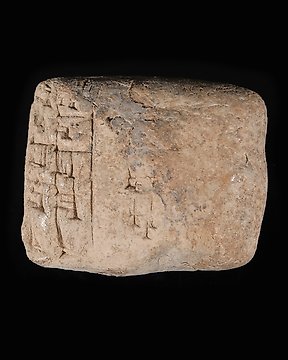
Altbabylonisch Ton Keilschrifttafel (Ohne Mindestpreis)
Nr. 84442387

Nr. 84442387

A fine cylinder seal from the Jemdet Nasr period bearing geometric engraving. The seal itself is long and tubular and hollow through the centre. The engravings are formed of neat straight lines encircling the body and interrupted on opposing sides by incised triangular shapes. Within these triangles are incised dots. Either end of the cylinder features diagonal sloping incisions.
Seals were often made of stone however there are also examples rendered in bone, ivory, faience, glass, metal, wood, and even sun-dried or baked clay. In the ancient world, seals guaranteed the authenticity of marked ownership – as such, they were instrumental in legal transactions, and in the protection of goods against theft. Seal amulets with stylised animals have been found throughout Mesopotamia in contexts dating to the late fourth millennium BC, although stamp seals and cylinder seals were the predominant types in the ancient Near East.
The Jemdet Nasr period arose at the turn of the 3rd millenium BC, and takes its name from a Tell in Southern Mesopotamoia at which an abundance of archaeological material was discovered. This material was stylistically unique both from the material culture of the Uruk period that preceded it and contained the first finalised version of the cuneiform script, making it a pivotal period in the development of early civilisation.
Measurements: H5.3cm x W1.2cm
Provenance: From Ex. Cotswold collection 1980. A large part of the collection was sold by a Cirencester Auction in November 2018.
So kaufen Sie auf Catawiki
1. Etwas Besonderes entdecken
2. Höchstgebot abgeben
3. Sichere Zahlung durchführen